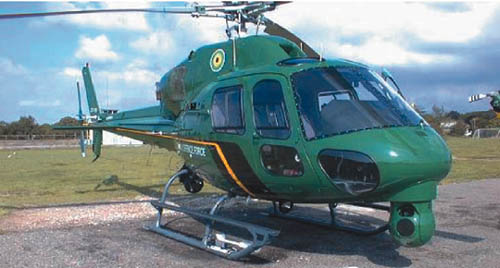|
|||||||||||||||||||||||||||||||
| Home > Info Centre > Publications > Alert 2000 > Thermal Imagery in the 21st Century | |||||||||||||||||||||||||||||||
|
Imagine being able to see an object under the cover of darkness, or a person hiding in a tree. It is now possible to do so through the use of infrared imagery. The JDF recently acquired this technology with the forward looking infra-red system (FLIR) currently installed on the AS355N Ecureuil Helicopter. Infra-red imagining systems extend the human eye’s response to light so that it becomes receptive to the energy that is naturally emitted by warm objects. Capabilities The FLIR operator is capable of capturing thermal and colour video images from various distances with enormous clarity through the manipulation of various functions on the control console. These images with audio, can then be down-linked live to a ground station, fixed or mobile, both day and night. At the same time, the information can be recorded on a standard VHS cassette, either in the air or on the ground. This real-time imagery can allow ground commanders to take the most appropriate action in a hostile situation. This may help to ensure the safety of his own troops and that of the general public. In the area of search and rescue the FLIR system can be used extensively. Persons lost in the Blue Mountains for example, can be easily found due to differences between the temperature of the human body and that of the surrounding environment. Searches at sea are aided significantly by the camera’s ability to detect differences in temperature of less than one degree. It is therefore easier to locate persons lost at sea, by day or night. The automatic tracking of targets is a special feature of the Ultra 4000 system. It allows the camera to automatically follow a target without any input from the controller. It does this by detecting targets with defined characteristics (such as heat output) and locks unto them. The target will then remain in the camera’s field of view wherever it goes. Another plus to the Ultra 4000 is that live images can also be down-linked to local television stations. This will allow for live broadcast of events in the interest of public safety. Conclusion More effective modes of surveillance, more precise search and rescue (SAR) capabilities, auto tracking ability, evidence recording and live televising are the main features of the Jamaica Defence Force’s forward looking infra-red capability. The acquisition of these aircraft and the accompanying technology are testimony that the JDF is well on the way to moving into the 21st century.
|
||||||||||||||||||||||||||||||
|
|
|||||||||||||||||||||||||||||||

